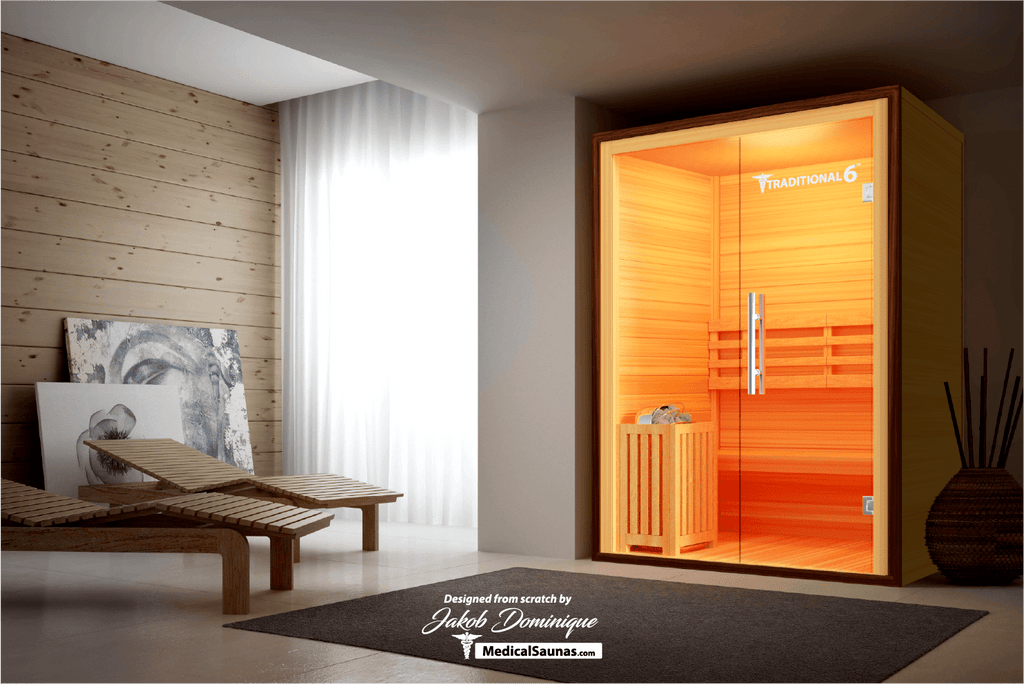Things about Traditional Sauna
Table of ContentsExcitement About Traditional SaunaThe Ultimate Guide To Traditional SaunaRumored Buzz on Traditional Sauna6 Simple Techniques For Traditional Sauna
A lot of the weight lost in a sauna is water loss and is re-gained upon rehydrating. Without a doubt sauna can be a vital component of a healthy weight loss program. To consider the differences in between typical and IR saunas, I will separate these into proven, theoretical, and made differences.Thus, the best point in the saunawhich goes to the ceiling straight over the sauna heateris usually between 185 and 190 F. Traditional Sauna. Claims that a conventional sauna goes beyond 200 F is merely not true and not relevant for electrical saunas sold in the United States. The temperature for a far-infrared sauna is generally established in between 120 and 140 F; nevertheless, unlike the typical sauna, the objective in and IR area is not to achieve a high temperature
Since of this, the temperature level difference is almost irrelevant, since excessive sweating causes both sauna kinds, but the method of heating up the body is various. In an IR sauna the bather will really feel warm and will certainly sweat a lot, but at a lot lower temperatures. Thus, if the goal is to invest longer amount of times in the sauna, the IR sauna is a great option.

Traditional Sauna for Dummies
When the high temperature is attained, the elements cycle on and off to maintain the heat. Many traditional sauna individuals appreciate putting water over the rocks to develop vapor to raise sauna moisture degrees. The advantages of pouring water over the rocks consist of: making the room more comfy, dampening the nasal passages, and enabling the use of aromatherapy by mixing necessary oils with the water.
In a far-infrared sauna, the heat waves penetrate the body to effectively heat the body and raise the body core temperature. To accomplish this enhanced temperature, Far-infrared emitters create infrared power which is close to the very same wavelength as that which the body naturally emitsoften described as the "Essential Range" of 7 to 14 microns), so the energy is well received by the body.
When the power gets in the body, it creates the body temperature level to boost Your Domain Name and inevitably causes sweat. In an infrared sauna it is necessary for the emitters/heaters to continue to be on practically continuously. Considering that there is no mass of rocks to retain warmth, the sauna will cool down if the emitters closed off.
As pointed out above, the sauna bather in an infrared space wishes to place himself before operating emitters to obtain optimal gain from the warm. The heating time for the 2 areas can be very different, relying on exactly how the rooms are made use of. For a standard sauna, a bather must enable 30-40 mins for the space to achieve a wanted temperature and to correctly pre-heat the rocks.
How Traditional Sauna can Save You Time, Stress, and Money.
A well built sauna will normally accomplish a temperature of 150-160 F in concerning 30-40 mins (Traditional Sauna). For hotter temperatures, the space might need to heat for a longer duration. As soon pop over to this site as the room attains set temperature, the heater will certainly cycle on and off, typically running regarding 50% of the moment. The shielded walls and the warmed rocks will maintain the area hot and at secure temperatures.
To some, 15 minutes was "thrown away" while the infrared energy heated up the timber panels rather than heating up a body, while others locate a pre-heated area to be more comfortable and think a raised beginning temperature level is necessary to begin perspiring. The length of suggested use for each space is around the very same (10-15 mins per session); nonetheless, because of the reduced air temperature levels and the capability to really feel the effects of infrared warm quicker than a typical sauna, it is not unusual for an individual to invest an overall of 20-30 minutes in an infrared sauna.
Conventional saunas often tend to be larger (thus utilize more electricity) than infrared saunas, although traditional saunas are absolutely readily available in one and 2 person dimensions. For a two-person standard sauna, 5x6 or 5x7 size is most preferred. The top bench can conveniently seat 2 or 3 people and is likewise long enough to exist down throughout the sauna session.


The ordinary cost per kWH of electrical power in the U.S. is about $0.11, so a 4.5 kW heating unit will set you back about $.50 to compete one hour, if the heating unit runs continuously for one hour. Commonly a sauna heating unit will certainly compete 75% of the very first hour and 50% of succeeding hours on because the components cycle once the set temperature is attained.
Traditional Sauna - An Overview
A 2 individual far-infrared area is usually physically smaller than a traditional sauna, typically regarding 4' x 4' or smaller sized. The IR heating unit is commonly 1.5-1.7 kW using a 120 volt 15 amp plug-in service. Because the room can be made use of quicker than a sauna area, we will think the area is utilized for to of an hour including warm up time.
There is a seldom discussed distinction in the social experience between the go to my blog two rooms. While our culture has lost a few of the social advantage of the standard sauna experience, it can be really socially gratifying. From family time in the sauna, to heart-felt conversations with better halves, to sauna partiesthe traditional sauna experience can lead to intimate socializing.
Most greater end infrared spaces include colored light therapy, audio systems and full-glass fronts.